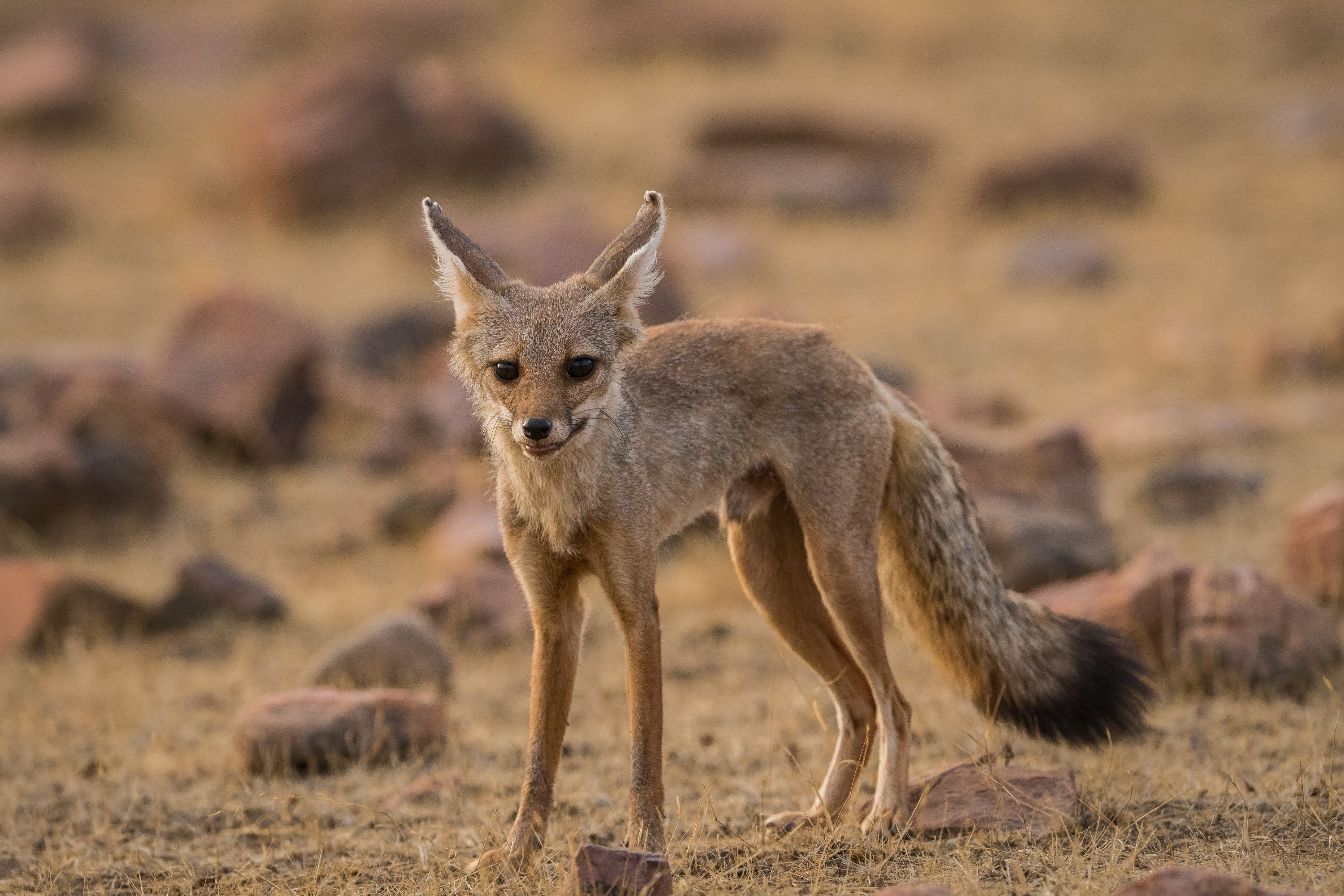Bengal fox
(Vulpes bengalensis)

Description
The Bengal fox (Vulpes bengalensis), also known as the Indian fox, is a fox endemic to the Indian subcontinent from the Himalayan foothills and Terai of Nepal through southern India, and from southern and eastern Pakistan to eastern India and southeastern Bangladesh Vulpes bengalensis is a relatively small fox with an elongated muzzle, long, pointed ears, and a long, bushy tail. The pelage ranges in color from buff to silver-gray with an overall grizzled effect; the dorsal pelage is mostly grayish and paler ventrally. The legs tend to be brownish or rufous, and the underparts light, a pale sand or ginger shade. The backs of the ears are dark brown with a black margin, and white inside. The ears have the same colour as the nape or maybe darker, but not having a dark patch as in V. vulpes. Its rhinarium is naked and the lips are black. The muzzle is pointy, and there may be a dark smudged marking along the upper part of muzzle in front of eyes. Extensive variation in coat colour exists across populations and seasonally within populations, but generally varies from grey to pale brown. The genus Vulpes can be separated from Canis and Cuon in the Indian region by the flat forehead between the postorbital processes and not inflated by air cells. The processes themselves are slightly concave with a raised anterior edge (convexly round in other canids). The canine teeth are longer. The Bengal Fox is endemic to the Indian subcontinent, ranging from the Himalayan foothills and Terai of Nepal through the South portion of the Indian Peninsula (but the western and east Ghats are not included) and from southern and eastern Pakistan to eastern India and southeastern Bangladesh. In Nepal and northeast India, it occurs up to 1,500 meters long. It was not reported from Afghanistan or Iran or from the Western Ghats, India. Its range is bounded by the Himalayas and the Indus River valley. It favors semiarid, flat to undulating land, bush and short grassland habitats. It avoids dense forests, steep terrain, tall grasslands and true deserts. It is relatively widespread in low rainfall areas where the vegetation is usually scrub, thorn or dry deciduous forests, or short grasslands. In the Indian peninsula, the species is confined to plains and open scrub forests. It was considered to be a habitat generalist, but it shows a strong preference for semiarid, short grassland habitats at multiple scales.
Taxonomic tree:







